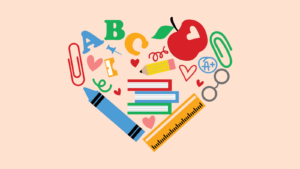Using Checklists in the Classroom
Explicit teaching is good teaching. The less students have to guess in terms of what they are expected to do, the more brainpower they can spend on creative and critical thinking in the task. One simple strategy has made a world of difference to my lessons by demystifying literacy tasks: The checklist.
Okay, so checklists are not new, but they are often overlooked for their simple power of turning a large task into a set of achievable sub-goals. Checklists can apply in the medical world (see NPR’s podcast on guidelines) in service and business training programs, and certainly in the classroom.
A low literacy student faced with what they see as an impenetrable task will give up before they’ve even started. Frustrated cries of “I don’t get it,” and “you didn’t explain this task!” ensue. The same student faced with a checklist of simple tasks they can tick off one by one suddenly has a road in. But checklists are not only useful to support beginners and low-literacy learners; as Steven Levitt astutely observes, “No matter how expert you may be, a well-designed checklist can improve outcomes.” Checklists can be differentiated for tasks of varying skill levels and complexity
I have used checklists with literacy tasks for younger students, teens in their final year of school, and adult ESL learners and teachers. Here are some examples of tasks with checklists.
Using Checklists for Writing Tasks
I used the task above with a group of English teachers during a professional development session. The teachers completed the task, which they will later use with their students. One challenge identified by the school was getting students to answer the question asked and to use the skills they had learned. The checklist gave a word limit and a list of skills we had previously learned, which writers should include. The vocabulary list offered additional support with spelling and vocabulary. The teachers responded positively to the tasks, saying it was challenging but clear. They practiced grading their own response using the checklist and discussed things they would add or change next time.
Using Checklists for Reading Tasks
This reading challenge uses a checklist in combination with a micro-story to encourage readers to scan for techniques. Students learned all of the techniques in the checklist in previous lessons, and the story is short enough to be approachable for low-literacy students. The checklist makes the task easily differentiated – for instance, a teacher could ask the class to complete the whole checklist, extension students to complete the additional writing task, and weaker students to find three out of six techniques on the list. I used this task with a Year 11 English Studies class who found it accessible and interesting. A great resource for reading challenges is the Learning Profession website
Group work and games
I made this “Short Story Challenge” for a primary to high school transition class. This time students worked in groups to write a story using the picture prompt. The checklist included points to turn the task into a game in which groups competed for the highest score. To further support students, I gave an explicit starting line. Students loved this activity for the competitive aspect, but also found that the checklist gave them clear goals to aim for, and challenged them to use techniques in their writing that they may not independently include.
Are you using checklists in your classroom? What other prompts do you use to help students access and engage with literacy tasks?




